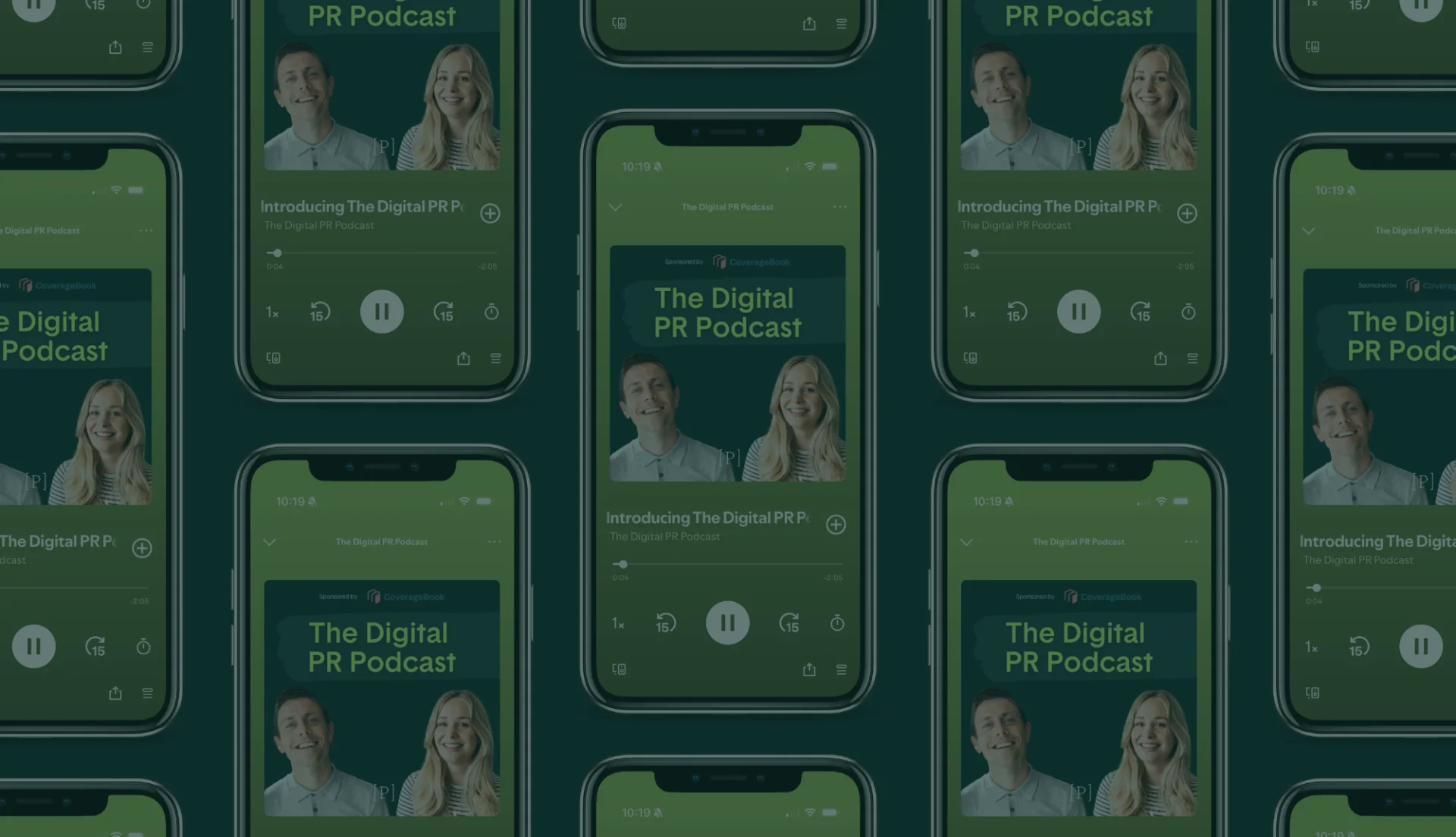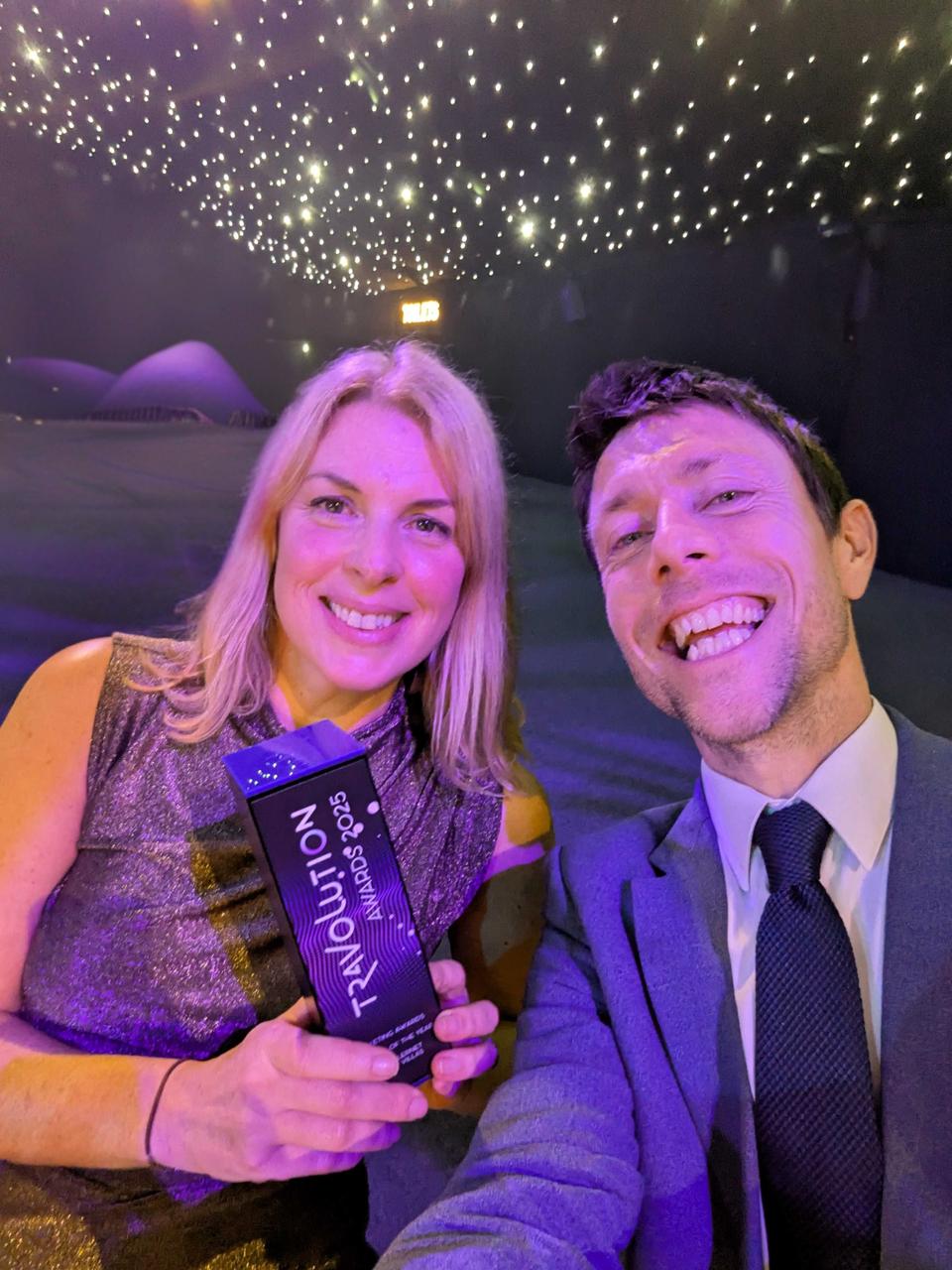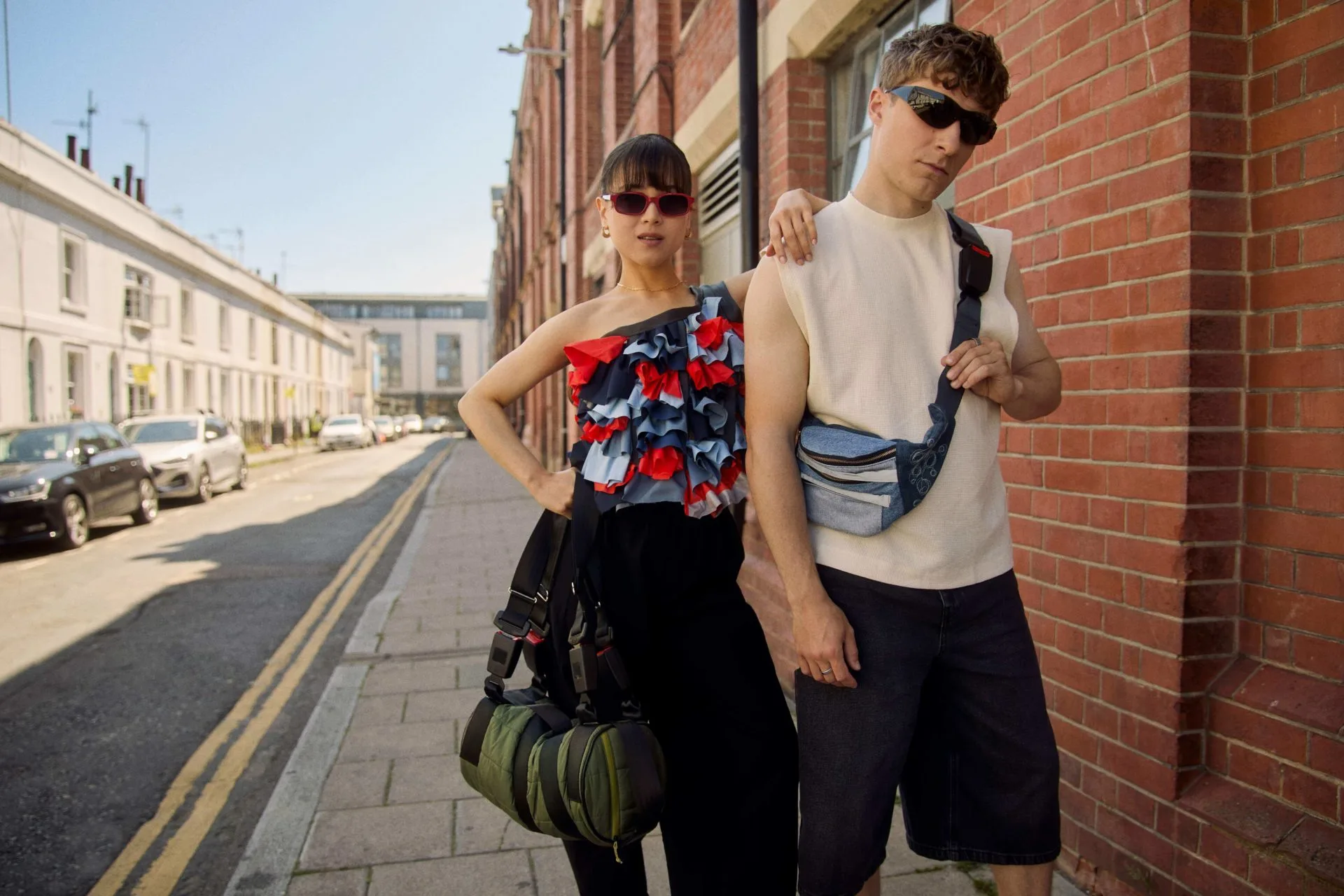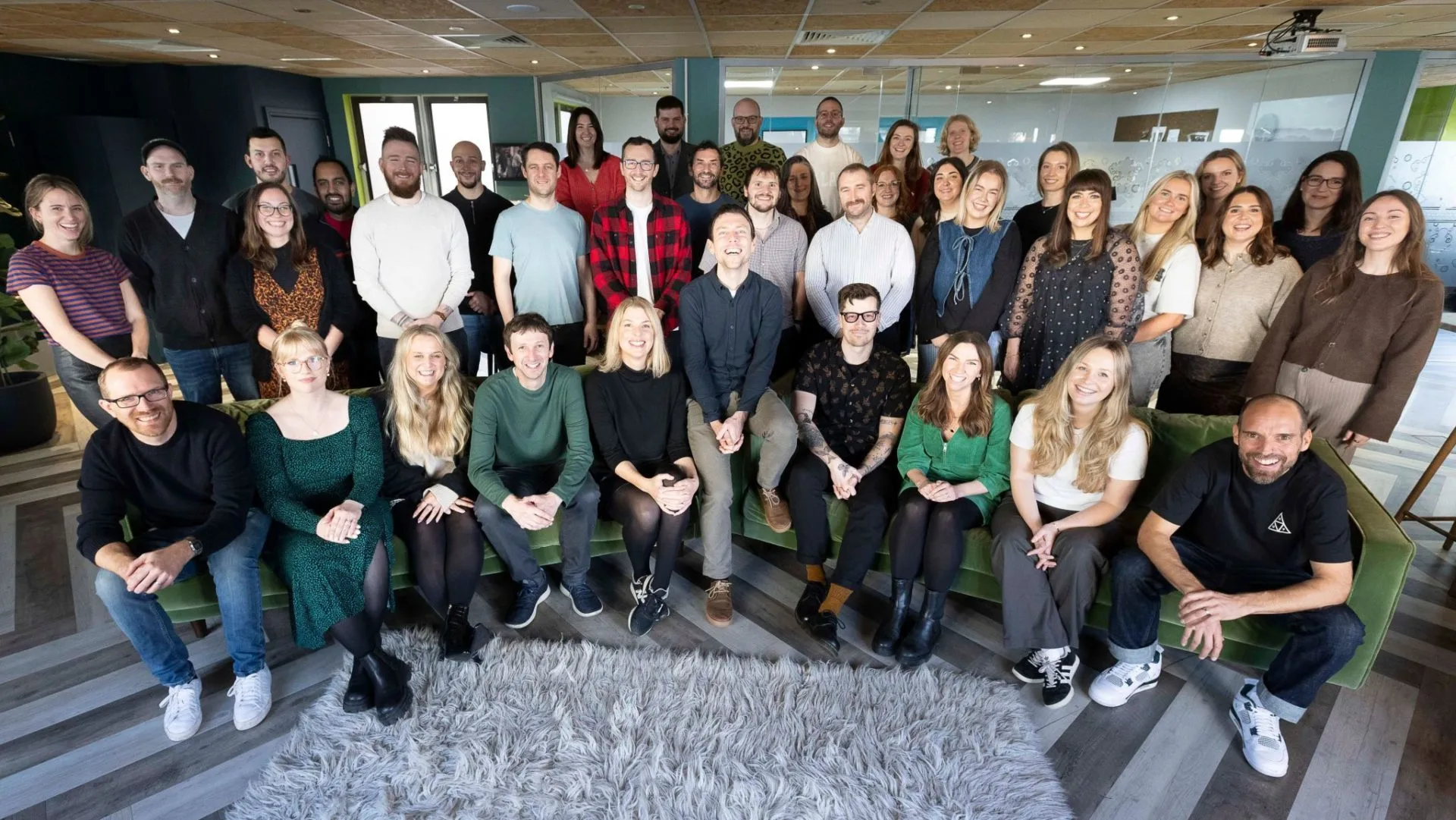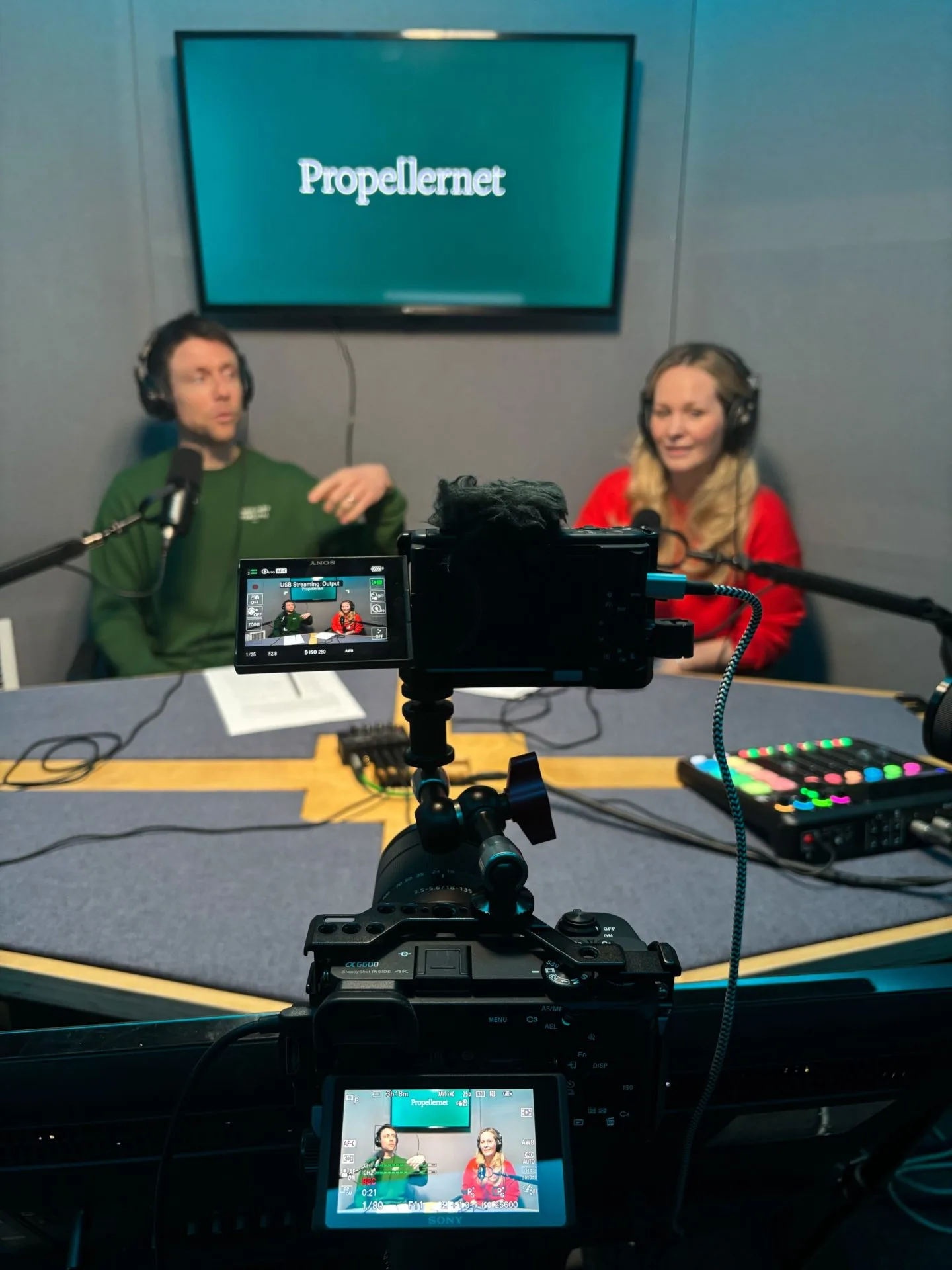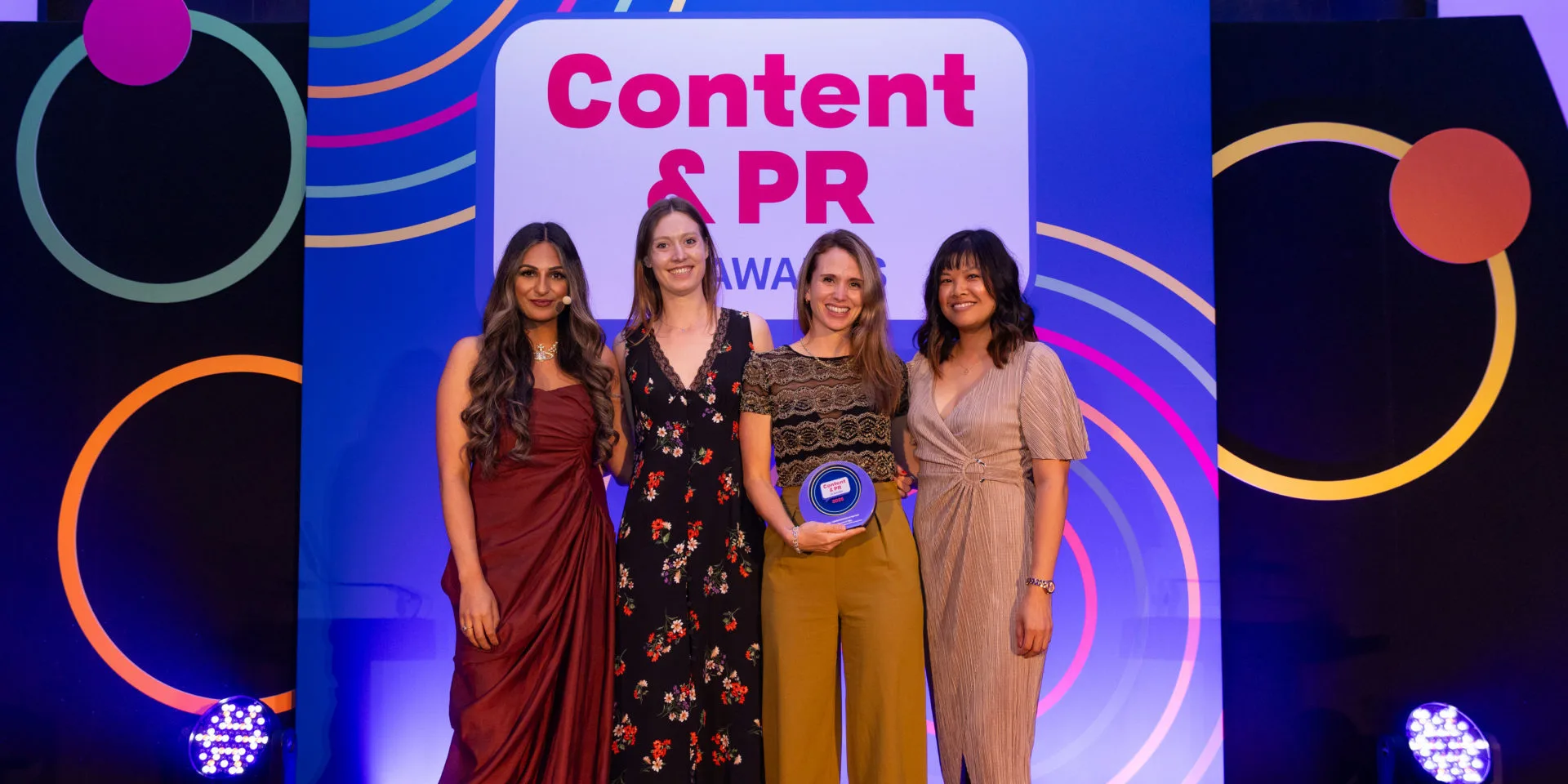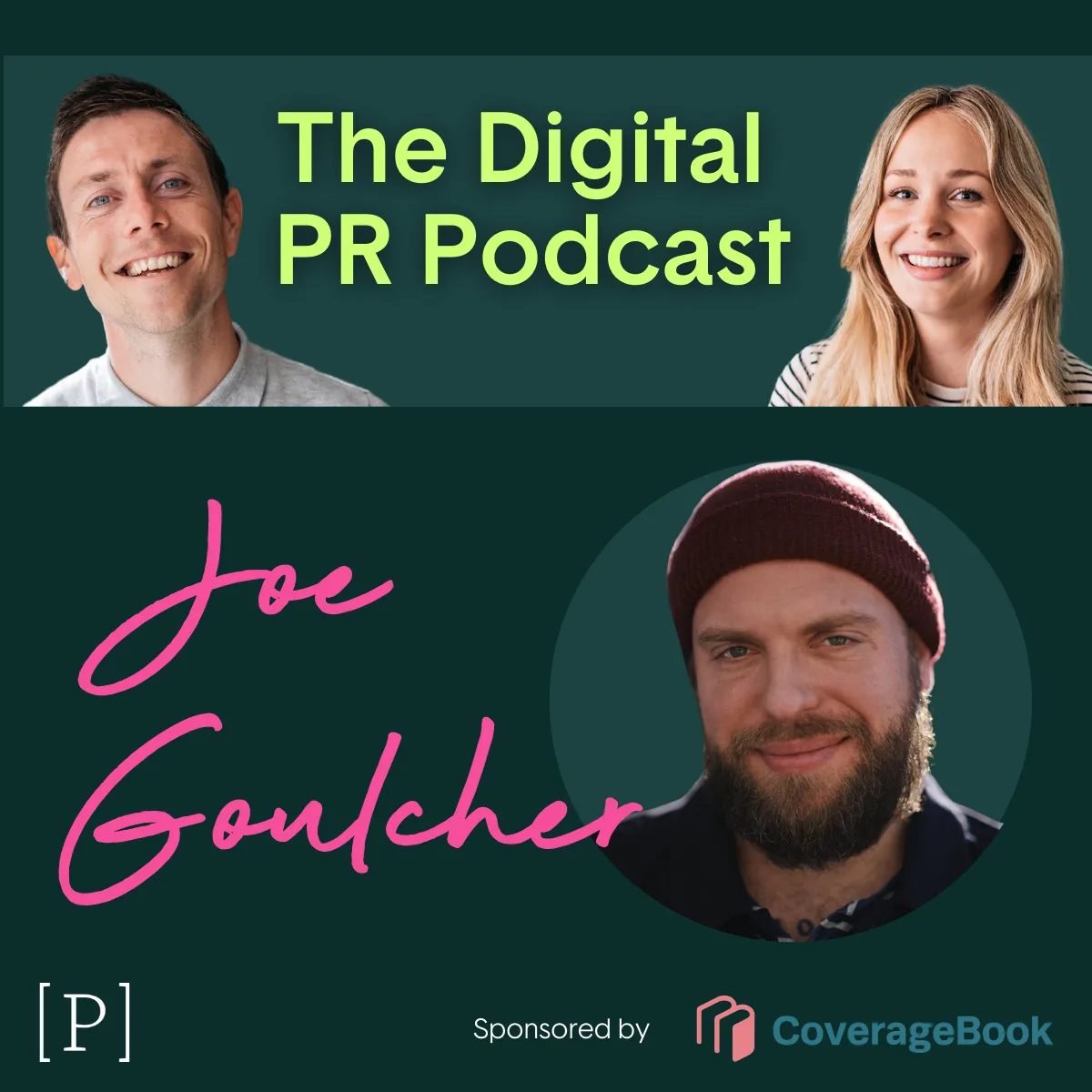
Episode #37
In this episode of the Digital PR Podcast, Louise Parker and Steve Baker speak to Creative Director Joe Goulcher about the real impact of generative AI on the creative industries. Known for his outspoken takes on ethics and originality, Joe shares why he refuses to use AI in his work, how top brands are pushing back against the hype, and why consent, craft and credibility still matter. They explore the ethical grey areas of AI-generated content, the environmental cost of machine-made creativity, and how to build a human voice in an industry obsessed with speed and scale.
Have a listen or read the full transcript below.
Steve:
Today we’re talking to Joe Goulcher, creative director, who’s worked with some incredible brands like Xbox, Boiler Room and Samsung. While his day-to-day is PR and social, he’s also an amazing follow on LinkedIn, where he gives his no holds barred thoughts on the creative industry. He’s been particularly vocal about AI and how it is used in creative work. So we’ll no doubt talk a lot about that today. We’re also incredibly honoured to be the very first podcast he’s appeared on. Welcome to the show, Joe. Thanks for coming on.
Joe:
Thank you so much. Thank you for popping my podcast cherry. Am I allowed to say that, the first sentence of the podcast?
Louise:
It’s a great first sentence. It’s a spectacular first sentence on a podcast. We’re delighted with that. Steve obviously gave you a bit of a mini intro, but for the benefit of listeners who might not be aware of you, could you give us a little overview about yourself and your career so far?
Joe:
Yeah, for sure. So I’m from Bradford originally, so up in West Yorkshire. I started out being a teaching assistant in Bradford Primary School and quickly realised that I wanted to get the hell out of there and move down into media and marketing land in London. So that’s what I did. I ended up getting an internship at Global Radio, which was fantastic. I quickly learned the ropes of what PR even was at that time, how it was activated and all the channels that they were using. But it was amazing. I got to work on some huge events like Summertime Ball and didn’t really have a clue what I was doing. But luckily, the lady there who was managing me, her husband, worked at M&C Saatchi Sport and Entertainment and put me in front of them. And I immediately clicked with a chap called David Roberts, who I’m forever grateful for about 15 years ago now, for giving me my first proper job in the industry.
So that was where I started and cut my teeth in essentially PR, and kind of sponsorship and those sorts of activations. So very quickly I was working on things like the warehouse project with Reebok, but also things like EE and the BAFTAs and Jamison with their film strategy and that sort of thing. I hit the ground running, didn’t really know what I was doing, but some things were clicking for me and social ended up being the main one that did. And I think at that time, no one really else in the agency knew what social was. The thing was that it was literally that long ago and no one was certainly hired in order to run it properly or efficiently.
So that’s where I started sort of cutting my teeth in PR, comms, and social. And then, yeah, I kind of meandered through the industry for a long time, lots of full-time, lots of freelance, dabbled in the kind of entertainment space with agencies like DDA, so lots of film and Premiere as well, Premiere PR. And yeah, I’ve been in-house at EE just after M&C Saatchi, actually, client to client side. Again, working on the BAFTAs and Glastonbury and Wembley sponsorships and kind of running social with the team there. And then, a heck of a lot of other stuff as well in between. I mean, some of my favourites in terms of kind of more freelance capacity stuff is, like you said at the beginning, Boiler Room was brilliant. I’ve done a lot of work with PlayStation and was also the global creative social director and agency of record for Xbox for a good two plus years.
Louise:
I think you’ve named every big brand that I could probably think of.
Steve:
You have an amazing CV.
Louise:
That’s incredible.
Joe:
Yeah, my CV is a wreck. Once you start putting logos on that document, it’s unreadable. So I’ll keep it brief today, but feel free to reach out if you need any more information.
Louise:
Very impressive. What a career so far.
Steve:
We are big fans of your work. We’ve seen some of the stuff you’ve done on social. You first came to my attention via your hit mushroom tweet. The mushroom tweet, which was extraordinarily funny and it really, really, I mean, not just me, obviously hundreds of thousands of people, but it really got me and I read it quite a lot and showed it to people. But I kind of want to delve straight in and sort of get your thoughts on AI in the creative industry, because you’ve done all this brilliant creative work and now AI has come along and it poses some interesting questions which you have been talking about quite openly on LinkedIn. So tell us a little bit about your views on it, the positives, the negatives, how you’re using it, how you’re not using it. We’re really interested to put your brains on that.
Joe:
So I think the first thing that we need to do before we have any sort of discussion on it is actually define what we mean by AI. From my point of view, and unfortunately not the rest of the industry’s point of view, AI, meaning artificial intelligence, is something that we are clearly decades away from in terms of what that actually means.
What we’re actually seeing is large language models, and the models are then being created and used to generate images or video content based on existing content, right? That to me isn’t artificial intelligence. That will never be artificial intelligence. That is essentially a glorified plagiarism machine that is very useful and very exciting. And you can see it being used for fantastic, exciting reasons. But it’s also pretty dodgy in so many ways. And I’ll get into that in a sec.
In terms of the positives and negatives of – let’s stick with AI for the duration of this conversation because it’s easier – there are positives, we all know that. And I think it’s very easy to look at something like the NHS or ancient archaeology or being able to track down the body of a mountaineer that’s been missing for 10 years using artificial intelligence or large language or whatever it might be. That’s good. And that is obviously a good thing. Spotting cancer cells earlier would obviously be a very good thing.
There will always be bads. That’s the problem. And whether that’s from a completely hallucinated answer to a question on ChatGPT, or even more worryingly so today, Grok on Twitter is telling people that the famine in Gaza, the images that are coming out of that and the videos that are coming out, that they’re actually not in Gaza and they’re seven years old and they’re from the Yemen, which is incorrect. These are the tools that people are using, not just in our industry, but teenagers and kids and everyone and grandmas and everyone in between to verify information and to verify messages that are coming from around the world. And as soon as that gets into the hands of nefarious parties, I don’t have to tell you how terrifying and damaging that is, right?
When you apply that to our industry, where do you start? I think there’s conversations here around, one of the ones I hear a lot is, “Oh, get with the times, catch up or be left behind.” “You guys said the same thing when Photoshop came out.” That sort of stuff.
For me personally, that’s a completely false equivalence. That’s a fallacy. The nature of things like Photoshop and any other tools that you use on a computer to edit or to create with is very different from a tool that scours usually an illegal database of information, images, video content, and then recreates something from that. They’re two very different processes.
Joe:
I try my best to avoid it at all costs in agency land. I think when you’ve got a team of people around you that are genuinely some of the most talented hands-on designers and art directors that you’ve ever worked with. I did some work at Territory recently and worked with some amazing artists there. Territory Studios, who work with Disney and Apple and Amazon Prime, working on film posters and graphics and key art for amazing TV shows.
When you see the craft and the ability that these people have and the years and years of discipline and learning and understanding of different mediums, one of which will be a computer, absolutely, it strikes me as a very bizarre thing to then say, actually, let’s take all your toys away and just use this big shiny new thing to create an uncanny video for a pitch document or something like that.
And the more I work with the bigger clients of the world, the Apples and the Disneys, the more I am seeing them asking to absolutely not use generative AI in any capacity, even through the pitch process, never mind the end results of the actual content itself.
Louise:
Absolutely. I mean, it’s a big question as well. So it deserves a big answer. That’s interesting what you said about people stipulating “we don’t want any generative AI included.” Is that because they don’t feel it’s accurate? Or because they want, like what’s the reasoning behind that, do you think?
Joe:
There’s a multitude of reasons. I think it firstly depends on what vertical or what industry you’re in. So for gaming and for TV and film, and especially music as well, generative AI is still very, very controversial. And we all know the reasons why that is, from a rights perspective and from IPs, to the extent where you’re seeing Disney now take people to court and spend hundreds of millions of pounds to get their rights back.
But that also is there from a consumer perspective. And what you see, or what lots of brands see, is that as soon as they start dabbling in that kind of territory, things like Call of Duty, for example, did it last year with some generative artwork and in-game assets, and the pushback from a community and people that aren’t that literate in our world of industry, the actual consumers, are pushing back so hard. They are disgusted by a lot of this work, right?
They’re taking the things that they love about games, TV and film, the artistry, the talent, the craft, the voice acting, the physical rendering that goes into a beautiful piece of work, and circumnavigating all that talent. Taking the people out of that process and just producing what I would say is slop in a lot of ways. Right? That to me is a real kind of golden nugget from at least a brand perspective of like, actually, yeah, we don’t want to touch AI or generative AI in some regards, because people f***ing hate it.
Are we allowed to swear? Sorry.
Louise:
You’re absolutely allowed to swear.
Steve:
I think the comparison to the early days of Photoshop is really interesting. That comes up a lot. There’s this false idea that we always resist new technology, but this feels like a fundamentally different moment, because it affects trust and authorship. You’re not just editing, you’re creating something based on other people’s work, sometimes without their permission.
Joe:
Yeah, totally. I always use the foie gras metaphor, which is a bit gross, but it works. It’s like the industry is trying to foie gras generative AI into every crevice of our day-to-day work. And we’re being force-fed it whether we want it or not. Sometimes, it’s not even appropriate. It’s just about hitting a trend or pleasing a stakeholder.
And don’t get me wrong, I’m not anti-tech or anti-tools. I’m a huge nerd. I’ve always loved learning new platforms and trying stuff out. But I think we’ve crossed a line when people are losing work, being replaced in rooms, or when agencies are bragging about using generative tools instead of humans like it’s a badge of honour.
Louise:
I love that you brought up the idea of consent, because that gets talked about a lot in other areas of ethics, but not enough in tech. People’s work, likeness, and voices are being used in ways they never agreed to. It feels murky.
Joe:
Totally. And then you’ve got the environmental side too. The energy it takes to generate images or run these models is immense. We’re talking about the equivalent of flying business class back and forth from the UK to the US just to create a few AI-generated pieces. No one’s really talking about that at a brand level yet, but they will.
Steve:
It’s the iceberg underneath, right? All these hidden costs that haven’t made it into the mainstream conversation yet.
Joe:
Exactly. And the worst thing is that the stuff being generated isn’t even that good. Like, it’s rarely good enough to justify the environmental cost, the ethical compromises, or the lost jobs. It’s mediocre, but it’s fast and cheap, so it gets picked. That’s the real danger.
Louise:
So what do you think creators or people working in this space should do? How do we push back or protect our work and values in an industry that’s rushing into this stuff?
Joe:
There are a few things. One is community. Just talking to other people who feel the same way. You’re not mad for feeling uncomfortable about this. You’re not anti-progress. You’re not stuck in the past. You’re asking the right questions.
Another one is drawing your own line. So for me, I won’t use generative AI in any of my paid client work unless the client specifically requests it, and even then I’ll challenge that decision and explain why it’s not the right tool.
And lastly, visibility. That’s where something like LinkedIn comes in. I made a decision a while back to stop being passive and to start sharing what I really thought about the industry. That included frustrations, ethical concerns, but also stuff I found funny or interesting. The mushroom tweet you mentioned was just a daft observation about supermarkets, but it resonated.
Steve:
It did! It really did. I remember thinking, this is such a smart use of voice and tone, and you were making a point about something bigger in a really human way. It’s the opposite of how a lot of people use LinkedIn.
Joe:
Yeah, and the key for me is writing how you speak. That’s it. If it sounds like it could be a conversation down the pub or with your mates, it’ll land better than jargon or buzzwords. I treat LinkedIn like a playground, a testing ground. If something flops, who cares? But when it hits, it opens doors. I’ve had so many gigs come from just being honest and visible on there.
Louise:
That’s such a good way of framing it. And it ties in with this wider idea of being human in a digital space. It’s easy to get sucked into what you think you should say, or what a brand voice is supposed to sound like, and forget that it’s people reading it at the end of the day.
Joe:
Exactly. If you’re not being yourself, what’s the point?
Steve:
One of the other things we’ve admired about your presence online is how open you are about burnout, impostor syndrome, mental health and all that stuff. It’s refreshing, and it’s not something many people talk about, especially in our industry.
Joe:
Thanks, I appreciate that. And yeah, I try to be honest about the tougher stuff. I think for a long time, especially in agency life, there’s been this glorification of burnout. People wearing exhaustion like a badge of honour. “Oh, I was up till 3 a.m. fixing that deck” or “We pulled an all-nighter for this pitch.” And it’s like… why?
That’s not heroic. That’s a failure of planning, or process, or resourcing. And more importantly, it’s a failure to value people’s health and time. I’ve been guilty of that mindset in the past, chasing every gig, every freelance brief, never saying no, until it catches up with you. And it always does.
Louise:
It really does. And there’s still so much stigma around saying you’re struggling, especially in fast-paced creative roles where you’re expected to just be ‘on’ all the time.
Joe:
Exactly. So if me being honest about that helps someone else realise they’re not alone or gives them permission to take a break or set a boundary, then it’s worth it. I’ve had messages from people who’ve said, “I quit a toxic job after reading your post,” or “I asked for a raise,” or “I finally took that weekend off,” and that means more to me than any award.
Steve:
That’s amazing. And it really speaks to the power of having a voice and using it for good. Not just for likes or clout, but to actually shift something.
Joe:
Totally. And that’s why I keep doing it. It’s not about going viral. It’s about being useful, being honest, and being human.
Louise:
Love that. Final question for you, Joe. If you could give one piece of advice to someone just starting out in the creative industries now, especially in this era of AI and burnout and noise, what would it be?
Joe:
Be curious. Try loads of things. Don’t get obsessed with a linear career path, because it’s all a mess and no one knows what they’re doing. And don’t be afraid to be visible. Share what you think. Say the thing. Start the conversation. You might be surprised where it leads.
Steve:
That’s a perfect note to end on. Joe, thank you so much for joining us. It’s been an absolute pleasure.
Louise:
Yeah, thank you Joe. That was brilliant.
Joe:
Thank you both. Loved it.
